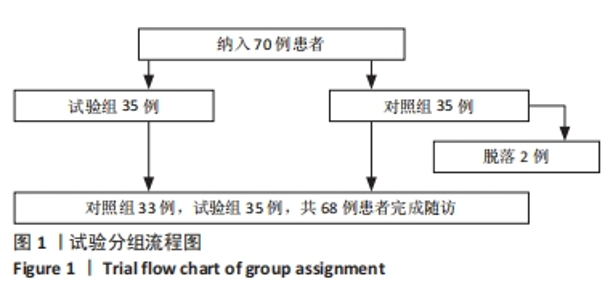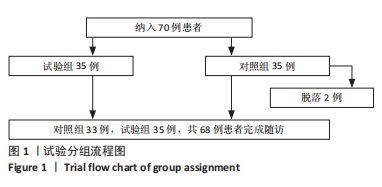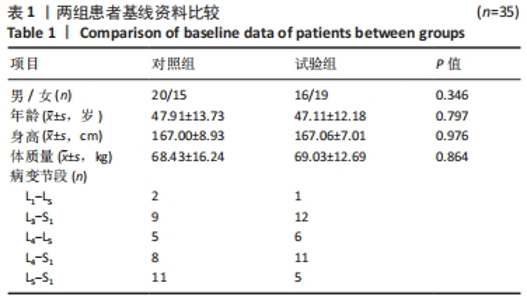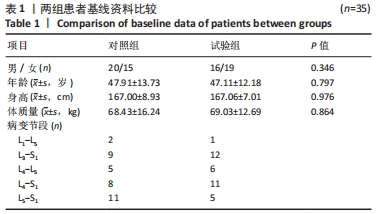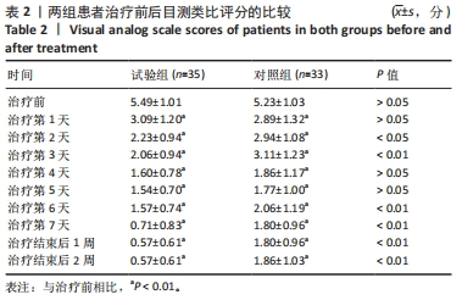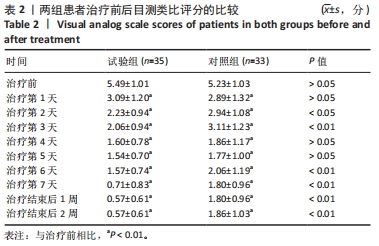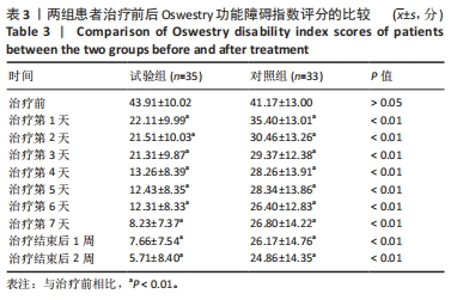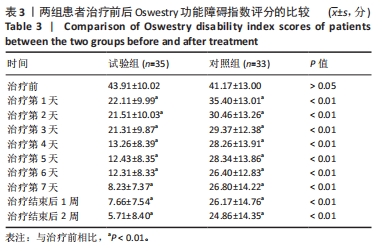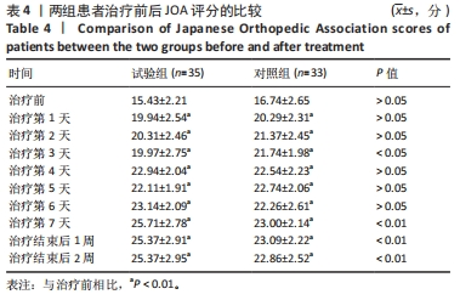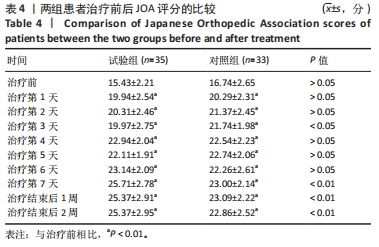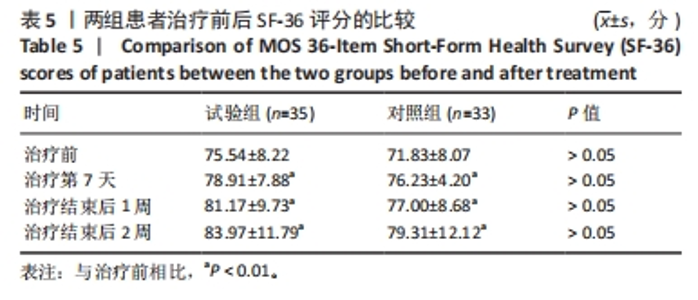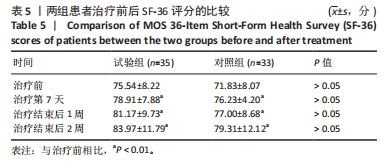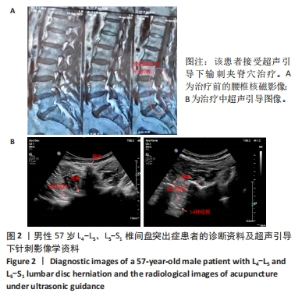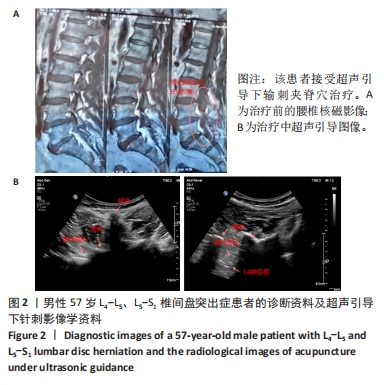[1] 周谋望,岳寿伟,何成奇,等.“腰椎间盘突出症的康复治疗”中国专家共识[J].中国康复医学杂志,2017,32(2):129-135.
[2] 翟骁,陈锴,孙武权,等.中西医协作阶梯式治疗腰椎间盘突出症的意义与展望[J].第二军医大学学报,2019,40(4):349-355.
[3] HIDALGO-OVEJERO AM, GARCIA-MATA S, MARTINEZ-GRANDE M. Natural history and nonoperative treatment of lumbar disc herniation. Spine (Phila Pa 1976). 1998;23(4):508-510.
[4] ZHAO X, LIANG H, HUA Z, et al. The morphological characteristics of paraspinal muscles in young patients with unilateral neurological symptoms of lumbar disc herniation. BMC Musculoskelet Disord. 2022;23(1):994.
[5] 陈镜聪,钟瑜,刘贵华,等.腰椎间盘突出受压神经的DTI参数与神经根疼痛的相关性研究[J].中国中西医结合影像学杂志,2022, 20(5):479-482,486.
[6] ÇELEN ZE, ONAY T. The Relationship Between Bone Mineral Density and Lumbar Disc Herniation in Postmenopausal Women. Cureus. 2023; 15(8):e44156.
[7] 王美,索娜,于欢,等.miR-206对腰椎间盘突出症大鼠髓核炎症、镇痛及自噬相关蛋白的作用机制[J].中国组织工程研究,2024, 28(11):1712-1718.
[8] 梅求安,周仲瑜,王刚,等.激痛点针刺联合益气活血方治疗腰椎间盘突出症急性期的疗效观察[J].中国中医急症,2022,31(10): 1825-1828.
[9] 李星萱,刘东华,文天林,等.腰椎间盘突出导致对侧症状的致病机制及治疗进展[J].中国骨与关节杂志,2023,12(7):551-555.
[10] 祝君,袁燕,刘艳芳,等.多裂肌脂肪浸润程度对电针深刺夹脊穴治疗腰椎间盘突出症的影响[J].颈腰痛杂志,2023,44(4):669-671.
[11] 林敏婷,杨轩,张蕾,等.“输刺”腰夹脊穴结合经皮椎间孔镜下髓核摘除术对腰椎间盘突出症患者疗效、肌电图及中医证候积分影响研究[J].四川中医,2023,41(5):184-187.
[12] 王善建,陈秀平.超声引导下针刀松解夹脊穴配合深刺次髎穴治疗腰椎间盘突出症的疗效观察[J].颈腰痛杂志,2022,43(5):700-702.
[13] WANG J, LIANG C, ZENG F, et al. Comparison of Needle-Warming Moxibustion and Other Physical Therapies for Lumbar Disc Herniation: a Meta-analysis. Comput Math Methods Med. 2022;2022:2986223.
[14] 张少巍,楼金成,苏嘉琪,等.针刺“后溪”“环跳”对腰椎间盘突出症大鼠脊神经干高迁移率族蛋白1的影响[J].针刺研究,2023, 48(6):592-599.
[15] 钟玉涛,黄东来,高邈.针刺频次对针灸疗效影响的探索[J].辽宁中医药大学学报,2012,14(10):132-133.
[16] 王浩,张良花,宁振振,等.夹脊穴深刺法治疗腰椎间盘突出症有效性及安全性的随机对照试验[J].北京中医药,2022,41(11):1296-1299.
[17] 戴荣水,林洁,罗彩云,等.芒针深刺腰夹脊穴为主治疗腰椎间盘突出症临床观察[J].光明中医,2020,35(23):3771-3774.
[18] 李慧明,郭永红.输刺夹脊穴联合当归拈痛汤加减治疗湿热型腰椎间盘突出症临床观察[J].中外医学研究,2020,18(4):37-39.
[19] 房芳,王松,兰端云,等.CT指导下深刺夹脊穴治疗下腰痛临床观察[J].新中医,2018,50(7):195-197.
[20] NAKAMURA S, TAKAHASHI T, MINAMI M, et al. Postoperative intractable leg pain caused by dislocation of drainage tube. Surg Neurol Int. 2023;14:177.
[21] JIANG HW, CHEN CD, ZHAN BS, et al. Unilateral biportal endoscopic discectomy versus percutaneous endoscopic lumbar discectomy in the treatment of lumbar disc herniation: a retrospective study. J Orthop Surg Res. 2022;17(1):30.
[22] 高玉发.重度脱垂型腰椎间盘突出症患者开展脊柱内镜下经椎板锁孔技术的疗效及其对VAS评分、ODI的影响[J].黑龙江医学,2023, 47(17):2070-2072.
[23] 中华医学会疼痛学分会脊柱源性疼痛学组.腰椎间盘突出症诊疗中国疼痛专家共识[J].中国疼痛医学杂志,2020,26(1):2-6.
[24] 何圭国,丁丽丽.活血逐瘀通痹汤联合甲钴胺、七叶皂苷钠治疗腰椎间盘突出症的疗效观察[J].中国中医药科技,2023,30(5):1017-1019.
[25] 杨国时.独活寄生汤加减联合针灸康复治疗腰椎间盘突出症对患者疼痛症状及腰部功能障碍的改善作用[J].黑龙江医药,2023, 36(4):881-883.
[26] 张栋禹,张磊,贺兵,等.手法推拿联合口服替扎尼定治疗椎间盘突出症急性期疗效观察[J].颈腰痛杂志,2023,44(5):893-894.
[27] TAKAKI S, MIYAMA H, IWASAKI M. Cost-effectiveness analysis of intradiscal condoliase injection vs. surgical or conservative treatment for lumbar disc herniation. J Med Econ. 2023;26(1):233-242.
[28] BANNO T, HASEGAWA T, YAMATO Y, et al. Condoliase therapy for lumbar disc herniation -2 year clinical outcome [published online ahead of print, 2022 Nov 21]. J Orthop Sci. 2022;S0949-2658(22)00317-7. doi: 10.1016/j.jos.2022.11.005
[29] 刘超男,梁晓淋,赵华,等.深刺夹脊穴至神经根治疗腰椎间盘突出症临床研究[J].亚太传统医药,2020,16(3):129-131.
[30] 于思劼.银质针深刺治疗腰椎间盘突出症患者的临床效果[J].医疗装备,2019,32(14):65-66.
[31] 姜桂美,贾超.夹脊穴不同取穴与针刺方法治疗腰椎间盘突出症的临床对比观察[J].针灸临床杂志,2006,22(8):8-9.
[32] URITS I, WANG JK, YANCEY K, et al. Acupuncture for the Management of Low Back Pain. Curr Pain Headache Rep. 2021;25(1):2.
[33] 孙剑,薛正海,刘维,等.电针深刺“腰突五穴”为主治疗腰椎间盘突出症临床研究[J].针灸临床杂志,2020,36(7):26-29.
[34] 王雪青.深刺夹脊穴至神经根联合手法推拿治疗腰椎间盘突出症对临床症状、血液流变学影响的临床研究[J].四川中医,2021, 39(7):169-172.
[35] ALRWAILY M, SCHNEIDER M, SOWA G, et al. Stabilization exercises combined with neuromuscular electrical stimulation for patients with chronic low back pain: a randomized controlled trial. Braz J Phys Ther. 2019;23(6):506-515.
[36] CHEN J, HAN B, DU J, et al. Clinical Evaluation of Efficacy on Ultrasound Combined with Neuromuscular Electrical Stimulation in Treating Lumbar Disc Herniation. Comput Math Methods Med. 2022;2022: 1822262.
[37] CAO J, XIE P, FENG F, et al. Potential application of MR-MR-US fusion imaging navigation with needle tail intelligent positioning in guiding puncture in percutaneous transforaminal endoscopic discectomy. Ultrasound Med Biol. 2021;47(12):3458-3469.
[38] 刘庆祖,韩振川,杨慧恺,等.经椎间孔入路经皮内窥镜下椎间盘切除术中穿刺定位辅助设备的研究进展[J].脊柱外科杂志,2023, 21(4):275-279.
[39] 王若州,杜小正,杨尚伟,等.针刀治疗肩周炎定点方式及临床应用研究进展[J].甘肃中医药大学学报,2022,39(5):83-86.
[40] 刘浏,吴豪杰,王来福.超声引导下针刀+椎间孔阻滞术治疗腰椎间盘突出症:一项单次治疗的前瞻性对比研究[J].颈腰痛杂志, 2023,44(5):862-864.
[41] 曹盼举,于海洋,张晓刚,等.腰椎间盘突出症的中医病因病机及其治疗思考[J].中医药临床杂志,2018,30(11):1999-2002.
[42] 裴兴虹,李成蹊,赵建新,等.电针深刺“腰突五穴”结合寿氏脉学治疗腰椎间盘突出症述要[J].江苏中医药,2021,53(10):62-64.
|
